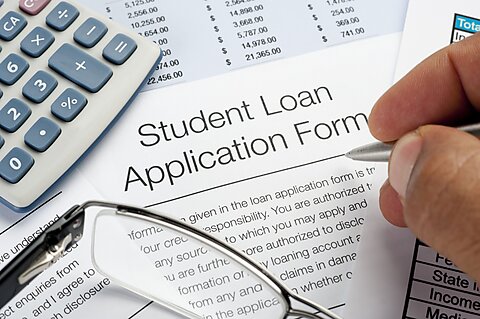Andrew Gillen
For the first time in decades, there is a promising window of opportunity to get the government out of the student loan business. A new briefing paper provides more background and explanation of the opportunity, but the case rests on four key points.
Private lending for student loans would be better
While we currently use a government-as-lender system, utilizing private lenders would be better. There are five main advantages of private lending compared to our government-as-lender system.
First, private lenders would finance less malinvestment. The government makes many loans that should not be made, including to students who are unprepared for college to attend substandard colleges. Since these loans are unlikely to be repaid, private lenders would lose money on them and cease making such loans, whereas the government continues to make similar loans year after year.
Second, private lending would hold colleges accountable. Colleges have little to lose from enrolling students, even if it leaves the students and government worse off because they get paid upfront and get to keep that money even if the student fails to repay the government. This lack of accountability encourages colleges to game the system. But to avoid losing money, private lenders would hold colleges accountable for outcomes.
Third, private lending would provide better incentives for students. While the government charges all students the same interest rate, for private lenders, students who study hard would present less risk and would be rewarded with better loans with lower interest rates.
Fourth, private lending would provide better incentives for colleges. Colleges that improve would benefit from their students’ higher repayment rates, which lenders would reward by offering lower interest rates.
Fifth, private lending would facilitate more informed decision-making. Government loans come with the same interest rate regardless of the quality of the college or the labor market for the field of study. However, private lenders would offer lower interest rates for better colleges and fields with plentiful jobs available. This would provide students with valuable information about the riskiness of different educational choices.
Flawed government accounting historically prevented the switch to private lending
But even though private lending would be better, we were stuck with government lending due to flawed accounting. Government lending has historically been forecast to generate profits. For example, in 2019, the Congressional Budget Office estimated a profit of five cents for every dollar lent.
This accounting was flawed for two reasons. First, it used the wrong discount rate, which overestimated the value of future loan repayments. For example, if the government charged an interest rate of 5 percent but used a 3 percent discount rate, government lending looks very profitable. Second, it failed to account for economic (e.g., recessions) and political risks (e.g., loan forgiveness initiatives). Indeed, a recent Government Accountability Office study documented that the cost of student loans has been dramatically underestimated. While lending was estimated to generate a profit of six cents for every dollar lent, the government ended up losing eight cents for every dollar lent.
Unfortunately, government accounting focuses on unreliable initial estimates (which project profits) rather than the after-the-fact reality, which entails losses. This means that even though transitioning to private lending would save the government money in reality, on paper, it would entail forgoing profits, which in turn means that politicians would need to raise taxes, cut other spending, or increase the deficit. These unappealing options have stymied efforts to transition to private lending.
But government lending is now losing money
The Biden administration repeatedly tried to enact mass student loan forgiveness. Some of its plans were stymied by the courts. But others were enacted or are still being litigated, and those affect government estimates for student loans going forward. This means that as a result of the Biden administration’s overreach, even flawed government accounting indicates that the government loses money on student loans now. The latest estimates indicate that the government will lose 19 cents for every dollar lent over the next decade.
Transitioning to private lending is now politically feasible
The fact that the government is losing money on student loans means that transitioning from government lending to private lending is now much more politically feasible. Instead of having to forgo “profits,” transitioning would now save the government around $212 billion over the next ten years, savings that could be used to cut taxes or finance other spending. But Congress needs to act quickly. If courts throw out the rest of the Biden administration’s changes to student loans, or if the Trump administration rescinds them, much of the savings will disappear, and the best chance to get the government out of the student loan business in decades will be lost.
For more details, see our new briefing paper.

